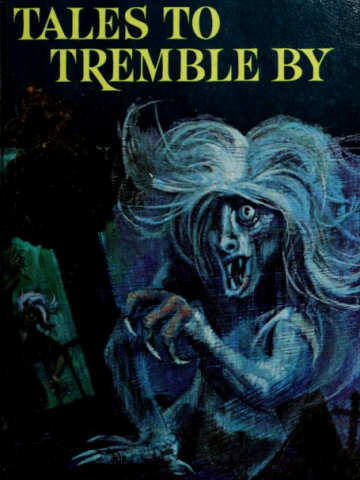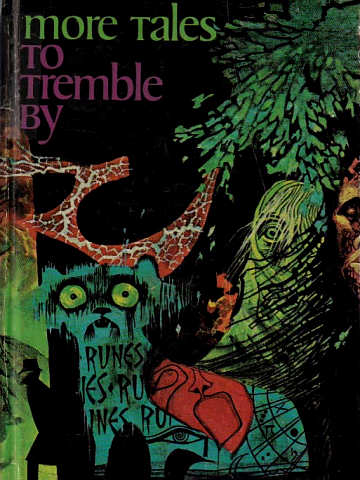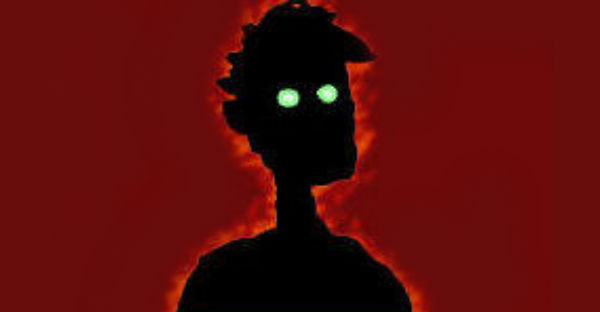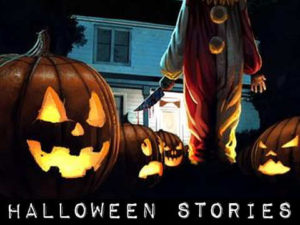Tales to Tremble By and More Tales to Tremble by were two horror anthologies edited by Stephen P Sutton. They contain classic tales of horror by famous authors.

Tales to Tremble By
1. The Hand by Guy de Maupassant
2. The Middle Toe of the Right Foot by Ambrose Bierce
3. The Signalman by Charles Dickens
4. Adventure of the German Student by Washington Irving
5. The Sutor of Selkirk by Anonymous
6. The Upper Berth by F. Marion Crawford
7. The Judge’s House by Bram Stoker
A Word to the Unwary
Are you in reasonably good health? Do you have a strong constitution? Most of all, do you have the courage to confront the deep abysm of the supernatural? If so, then you are ready to read this book. You may, at this time, skip the rest of the commentary and plunge into the concentrated horror that lurks just a few pages away. If, however, you are of a cautious nature, and are wary of unnecessary shocks to your nervous system, please continue this introduction. It will give you a little (but only a little) chance to prepare for what waits ahead.
Why have you picked up this anthology? Why do people like yourself delight in terrifying themselves with accounts of happenings beyond the range of man’s knowledge but not of his imagination? We believe that dedicated ghost-story readers are the adventurous souls of the world. Although they may deny it, in this world of computers and logic, inwardly they agree with Hamlet when he says, “There are more things in heaven and earth, Horatio, than are dreamt of in your philosophy.” The ghost-story reader is looking for The Story that will bring into clear focus the lurking horrors that inhabit the world between imagination and reality.
We have selected the following tales because they afford an excellent chance to peer into this other world. Waiting to leap at you from these pages are terrifying creatures created by world-famous masters of horror and mystery. There is the grisly hand in de Maupassant’s little masterpiece; it will crawl into your dreams like the giant insect it resembles. There is Charles Dickens’ haunting signalman, weaving a tale about ghostly portents of disaster. Ambrose Bierce is represented at his best with a simple but horrifying story of dueling, murder, and ghostly revenge.
Washington Irving departs from the charm of “Sleepy Hollow” to throw us into the bloody world of the French Revolution, where that remarkably efficient machine, the guillotine, was at work from dawn to dark. And for dedicated connoisseurs of horror we have included a tale by Bram Stoker, of Dracula fame. This story will make you wish you had company as you read — but not of the kind crawling about The Judge’s House.
Have you ever wanted to take an ocean voyage? Be sure you don’t share your stateroom with the damp, and very dead, variety of tourist found in F. Marion Crawford’s “The Upper Berth.” To round out our grim bill of fare we have an anonymous little story — almost a legend — concerning The Sutor of Selkirk, an inquisitive shoemaker who learns a little too much about his strangest customer.
We invite you now to embark upon your journey into the world of the supernatural. Do you feel you are ready? Perhaps — or perhaps there is really nothing that can prepare you for Tales so Tremble By.

More Tales to Tremble By
1. The Red Lodge by H. Russell Wakefield
2. Sredni Vashtar by Saki
3. Thurnley Abbey by Perceval Landon
4. God Grante That She Lie Still by Cynthia Asquith
5. The Voice in the Night by William Hope Hodgson
6. The Extra Passenger by August Derleth
7. Casting the Runes by M.R. James
8. The Book by Margaret Irwin
A Word to Midnight Readers
Is THIS Your time of night? Are you most comfortable near midnight, when the shadows darken in the corners and the wind mutters though the caves? You are? Coed! For this book is designed for lovers of “the very witching time of night? You know, of course, that you may be facing con-siderable danger as you read the following pages.
Edgar Allan Poe once said: “Alas! the grim legion of sepulchral terrors cannot be regarded as altogether fanciful… they must sleep, or they will devour us; they must be suffered to slumber or we perish.” This might be putting it a little strongly, you say. After all, this is only a book, a collection of totally imaginary stories. But is it? We never really know where authors get the ideas for their ghost stories. Perhaps it is all imagination; on the other hand, maybe there is a basis in fact — perhaps even a personal experience — from which each story grew. If this is true, would it not be possible that in the retelling these “sepulchral terrors” might be called up from their grim vaults? And no matter how willing we are to face these horrors in our imagination, how ready are we to face them in reality?
Impossible? Consider this: Suppose an author (or an editor) with a certain knowledge and command of the supernatural, and a grim sense of humor, incorporated a special formula in his work — a formula that when studied, however unknowingly, at a certain time of night, under a certain conjunction of the stars, would cause the creature or thing in the story to rise before the reader.
Preposterous? Perhaps, but let us survey the creatures that could shortly appear before you. First there is the creeping green thing in Wakefield’s “The Red Lodge,” who is in turn probably related to the dry, disinterred bones that rattle down the ancient balls of Landon’s “Thurnley Abbey.” If the great god Sredni Vashtar appears before you, just hope that his passing is more pleasant than in Saki’s story of the same title. And how would you feel with a lich sitting next to you? Even if you don’t know what a lich is now, you would easily recognize one, as did the terrified hero of Derleth’s “The Extra Passenger.”
Do you like mushrooms on your steak or on your pizza? That will change after the fungoid creature in Hodgson’s “A Voice in the Night” oozes onto your footstool. “God Grante that She Lye Stille” — an interesting title for Cynthia Asquith’s story, and even more interesting as the epitaph inscribed on Elspeth Clevver’s moldering tombstone. Is this supplication for the comfort of the dead — or the living? Approach M.R. James’s story, “Casting the Runes,” with special caution. The good Dr. James was a noted scholar of obscure ancient and medieval lore. He, perhaps more than any of the other authors in this book, would have had the necessary knowledge to play the little joke mentioned above. Wouldn’t it be amusing to find that you have inadvertently cast the runes upon yourself — just as a strange shadow darkens your lamp?
Finally, and most ironically, Margaret Irwin’s story, “The Book,” deals with the possession of a man by a book — an evil, ancient, crumbling manuscript with a musty, tomblike smell. Our book has none of these qualities, of course — but still, we refuse to be responsible for anything that happens when you read More Tales to Tremble By.







Add comment